How Often Do Pros Hit Driver? Not As Much As You Think!
This post contains affiliate links from which Golfing Focus earns a commission (at no cost to you).
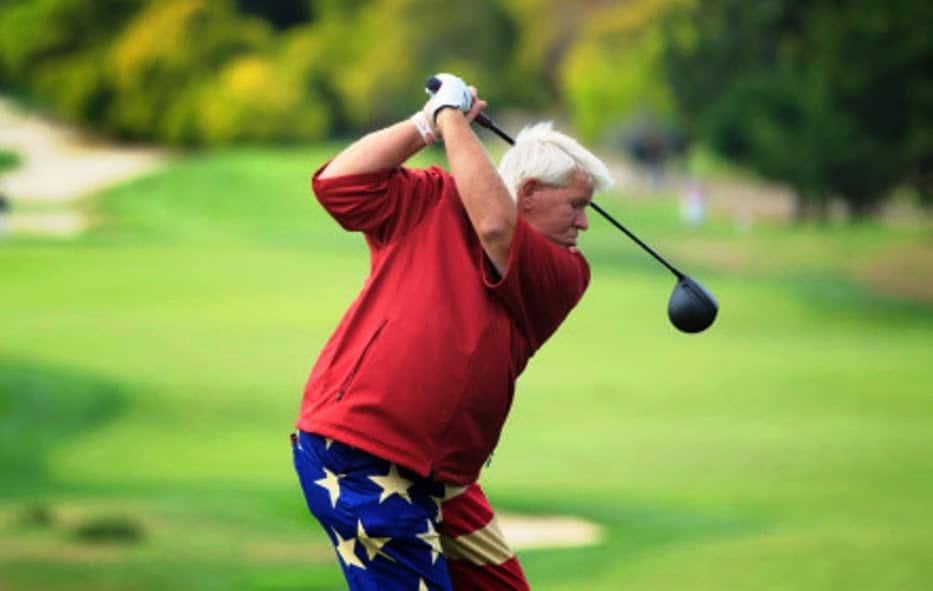
I was playing golf recently with my brother who is a professional and after a few holes I started noticing that he was only hitting driver off the tee every now and then.
Unlike me who typically never thinks about what club I am pulling out of the bag each hole it got me thinking about strategy off the tee and how often pros in general hit driver?
On average pros hit their driver 71.3% of the time on all drives excluding par 3 holes according to PGA Tour Shotlink data gathered since 2012. However when pros do not hit driver their average tee shots measure 283.5 yards which is only 7.94 yards less than the 291.4 yard average drive that they reach when hitting driver.
I don’t know about you but the fact that the pros do not hit driver off the tee close to 1/3 of the time surprised me a bit.
With all the talk about distance in the game these days, and being so used to seeing the best pros in the world smashing the ball such huge distances down the fairway, my automatic assumption was that they would be hitting their driver the vast majority of the time.
The fact that they are not is interesting in itself but when you look at the data in a bit more depth it is also clear that this is a strategy regular amateur golfers should not be copying!
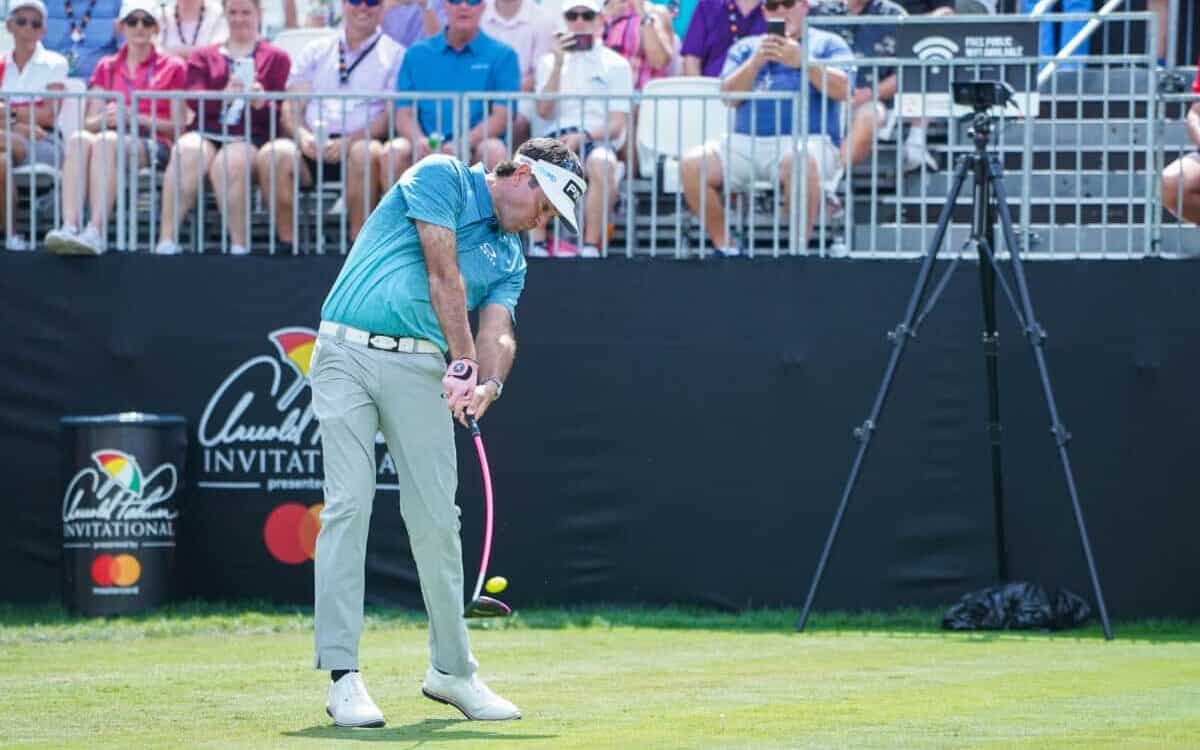
Pros Don’t Give Up Much Distance When Not Hitting Driver
When you watch pros like Bryson DeChambeau and Dustin Johnson hitting their driver over 400 yards every now and again you would be forgiven for thinking that the best players in the world do not need to think too much when it comes to choosing which club they hit when they step onto the tee.
With the average drive on the PGA Tour being close to 300 yards – 296.6 yards to be exact according to the latest PGA Tour Shotlink data – at first glance it would seem doubtful that the pros are not hitting driver in order to achieve such huge hitting distances.
But perhaps surprisingly when you look at the data from the official Shotlink system used by the PGA Tour to collect driver usage statistics since 2012 it is clear the pros put much more thought into their club selection on par 4’s and par 5’s than you might initially think given the distances they hit the ball.
| PGA TOUR YEAR | % DRIVER USAGE | AVERAGE DISTANCE – ALL DRIVES | AVERAGE DISTANCE – DRIVER ONLY |
| 2012 | 71.7 | 282.3 yards | 289.7 yards |
| 2013 | 71.0 | 280.3 yards | 287.8 yards |
| 2014 | 71.2 | 281.6 yards | 289.1 yards |
| 2015 | 72.0 | 283.5 yards | 291.2 yards |
| 2016 | 72.0 | 283.5 yards | 291.2 yards |
| 2017 | 71.3 | 284.9 yards | 292.7 yards |
| 2018 | 68.6 | 287.3 yards | 296.5 yards |
| 2019 | 72.4 | 284.6 yards | 293.3 yards |
As the table from the USGA’s Annual Distance Driving Report above shows the pros have been hitting their driver between 68.6% and 72.4% of the time since data usage data was started to be tracked on the PGA Tour.
This of course does not include the clubs the pros use at par 3s and is an indication that the best players in the world are paying close attention to their course management strategy when deciding what club to hit off the tee.
Clearly it is simply not the case that they grab the longest club in the bag every time but it is also clear that on average the pros are not sacrificing much distance when they opt to hit a fairway wood, driving iron or long iron off the tee instead of driver.
Since 2012 they have never given up more than 9.2 yards on average when not hitting driver which suggests that when they choose to tee it up with another club off the tee they are doing so very conscious of the fact that they are generally not sacrificing much distance as a result of that strategy.
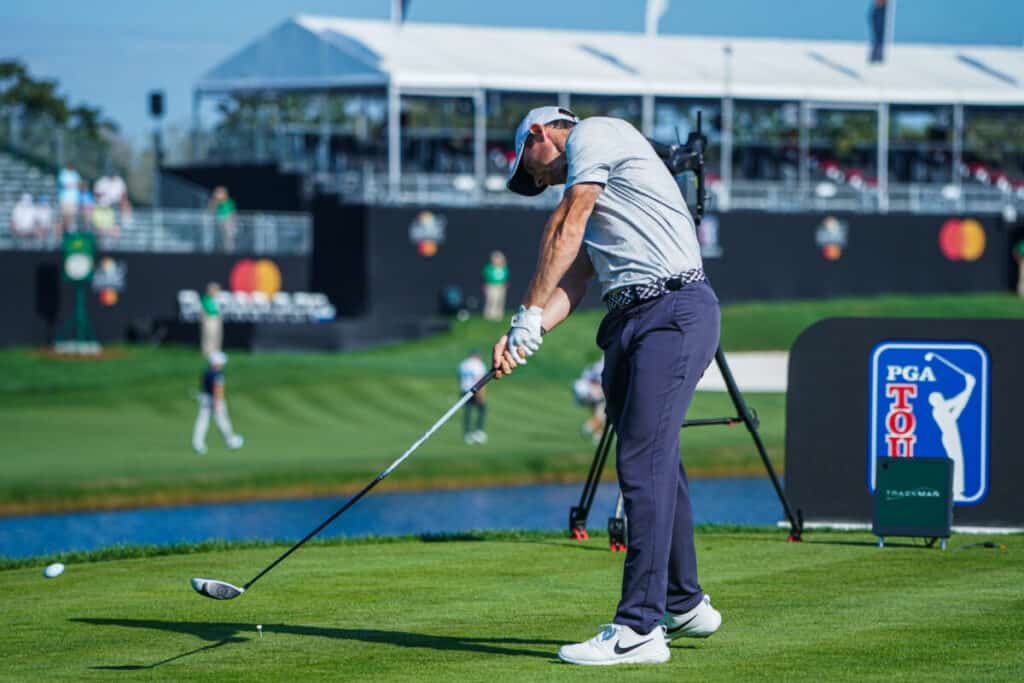
Sacrificing Distance for Accuracy is a Poor Trade
Stats are an increasing component of the game of golf and even more so over the last decade in particular.
Traditional stats, such as fairways hit, which regular players have tracked for years, have been replaced by ‘strokes gained’ metrics and these have challenged some of the fundamental understandings of the game and what players should focus on to improve their scores.
And the biggest historical myth these new stats have exposed is that the short game is the most important part of the game.
Columbia Business School Professor Mark Broadie, the pioneer of the ‘strokes gained’ metrics adopted by the PGA Tour, has analysed millions of golf shots and come to the clear conclusion that the long game – driving and approach shots – explains two-thirds of the difference in scores between golfers.
“For pros driving distance is more important than driving accuracy. For amateur golfers, driving distance is even more important for scoring than driving accuracy.”
Mark Broadie, Columbia Business School professor, author of ‘Every Shot Counts’ and pioneer of the ‘strokes gained’ metrics first adopted by the PGA Tour in 2011
What does that mean?
In short it means driving and approach shots are more important to all levels of golfers when it comes to scoring than chipping and putting.
For some such a statement is close to golfing treason but the stats across all levels of the game back it up and help explain why pros are constantly searching for increased club head speed and distance especially with their drivers.
But what is also helps to explain is that, based on the data table above, even when the pros decide not to hit driver off the tee they are on average not giving up a huge amount of distance when they decide to do so as they are well aware how important distance is when it comes to scoring well.
They are just certain holes where the risk-reward balance equation tips them to choose a more conservative club off the tee however when you look at the stats even when they make that decision around 30% of the time they are not losing much distance on average when doing so.
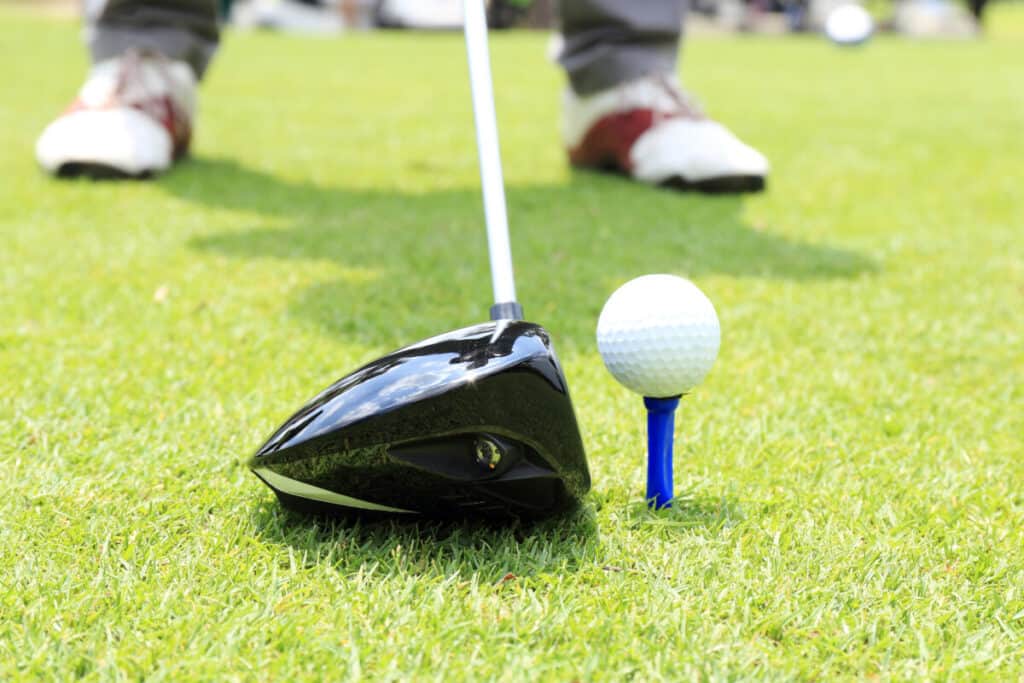
How Often Do You Use Driver? Don’t Base Your Decision on the Pros!
What does the frequency with which the pros hit driver off the tee mean for us regular amateurs?
Based on the fact the best players in the world are choosing not to hit driver close to 1/3 of the time surely that then means that it makes sense for amateurs to simply follow their example when it comes to often they should use a driver?
The short answer to that question is however a resounding no.
Male amateur golfers use a driver 88.2% of the time on average according to the USGA Annual Distance Driving Report. 21+ handicapped players use the driver the most at 96.7% of the time with 6 or less handicappers using driver the least amount of times at 84.5%. Female amateur golfers choose to use driver 96.9% of the time.
Given these stats what seems probable is that high handicapped male and all female amateurs are in general making better decisions when it comes to club selection off the tee at par 4’s and par 5’s compared to their lower handicapped male counterparts.
And the reasons for this are best explained by Steve Fawcett, a former professional golfer who after a failed attempt in the pro ranks, turned his three math degrees knowledge to golf stats and derived a course management system for players called DECADE.
Roll the clock forward and his math-based system, which initially helped Will Zalatoris to win the 2014 US Junior Amateur is now used by PGA Tour players, including Byron DeChambeau to guide them on what club to hit and where to aim shots based on their data.
Talking recently on Golf Science Lab Fawcett explained a simple guide based on the data to inform golfers what club they should play off the tee.
“If you hit it under 270 yards, you should probably be hitting driver almost everywhere that a hazard doesn’t cross [and that you can’t carry or might roll into] …. Once you start hitting it over 260, 270, if there’s 65 yards between hazards, you will have to think a little bit. And then if there are, and the fairway does not pinch to less than 40 yards between bunker and trees .. it’s probably going to be driver 98% of the time.”
Scott Fawcett, Golf Science Lab podcast
So when you then look at driver usage statistics below for amateur male golfers, coupled with the average driving distances, for the various handicap groups it seems likely that the vast majority are not using their driver off the tee as often as they should be based on Scott Fawcett’s advice.
| HANDICAP | % DRIVER USAGE | AVERAGE DRIVING DISTANCE |
| <6 | 84.5% | 239.2 yards |
| 6-12 | 88.6% | 219.8 yards |
| 13-20 | 89.3% | 200 yards |
| 21+ | 96.7% | 176.6 yards |
| All | 88.2% | 218.6 yards |
And to add a bit more weight to that argument you only need to look at Arccos’ – Golf’s first Artificial Intelligence platform – analysis of close to 30 million shots played by their amateur users in 2021 shown in the graph below.
According to their data only 3.9% of amateur golfers are reaching the 270-yard driving distance mark discussed by Scott Fawcett which would suggest the vast vast majority of regular players need to have a pretty good reason not to be automatically reaching for their driver when they step onto the tee.
[Note – If you are interested in Arccos – Golf’s first artificial intelligence shot tracking platform – and getting an exact idea of how far you hit the ball so you choose the right club every time click here to get 15% off when you use our discount code – GOLFINGFOCUS15. Recognised by Golf Digest Editor’s awards 5 years running Arccos’ members improve by an average of 5 strokes in their first year of membership!]
Other great articles related to this topic:
- What Determines Driver Distance? Skill Triumphs Over All!
- How Far Should You Hit a Driver? FULL GUIDE By Age, Handicap etc.
- Should Beginners & High Handicappers Use a Driver? Yes & Yes
- Going the Distance? How Far Should Beginners Hit A Golf Ball?
- Are Driving Range Distances Accurate? Golf Balls are a Problem
- How Far Do Pro Golfers Hit Each Club? A 2022 Guide
- How Do Pros Hit the Ball So Far? It’s Not About the Equipment
- What Percentage of Putts Do Pros Make? TV Does Not Tell the Story
- Most Popular Driver on LPGA Tour? Top 50 Player Guide (2021)
- What is Considered a Long Golf Course? The Long and Short of It
- What Driver is Most Used On the PGA Tour? Top 100 Player Analysis
- 10 Best Golf Stats to Keep Track of. Start with ‘Major Mistaks’
- Are There Any PGA Tour Pros Without a Hole in One?
- The PGA Tour’s Rising Driver Ball Speeds Mean One Thing – $$
- How Many Balls Do Pros Hit Before a Round? That’s Not the Point!
RECENT ARTICLES
LEGAL INFORMATION
This site is owned and operated by Golfing Focus Limited, a private limited company whose registered office is in London, UK. Golfing Focus Limited is a participant in the Amazon Services LLC Associates Program, an affiliate advertising program designed to provide a means for sites to earn advertising fees (at no cost to you) by linking to Amazon.com. Golfing Focus Limited also participates in other affiliate programs with the eBay Partner Network, FlexOffers, CJ.com, Svorn and other sites and is compensated for referring traffic and business to these companies (again at no cost to you).
Our Socials

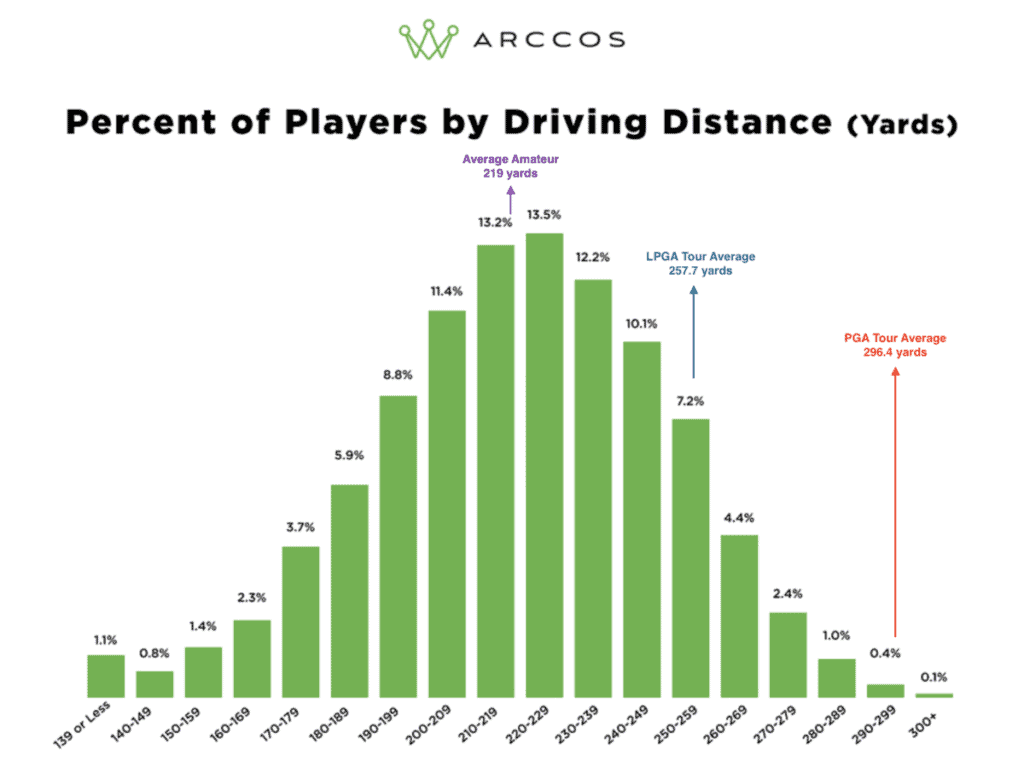





Leave a Reply